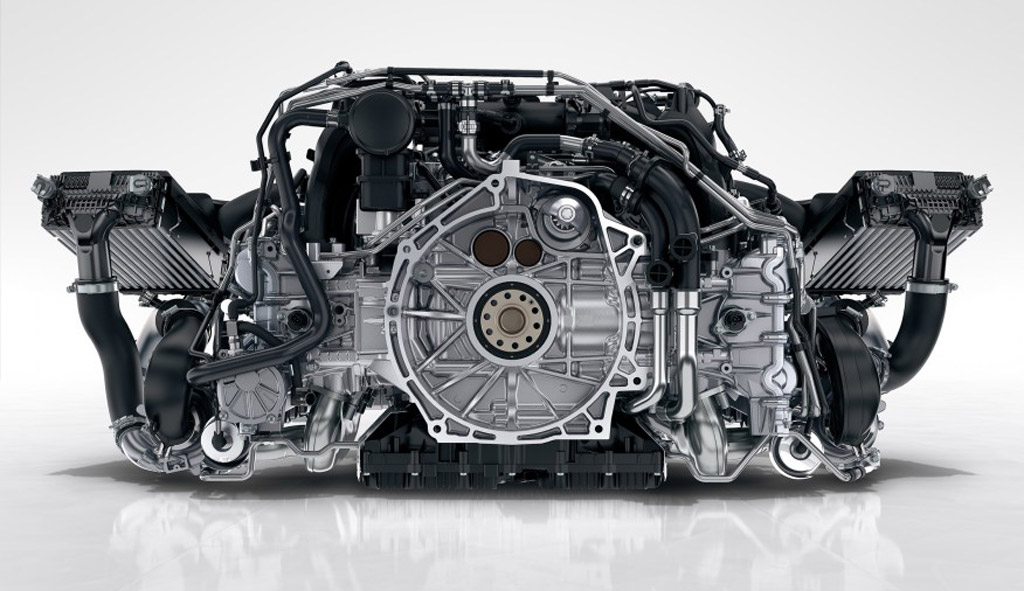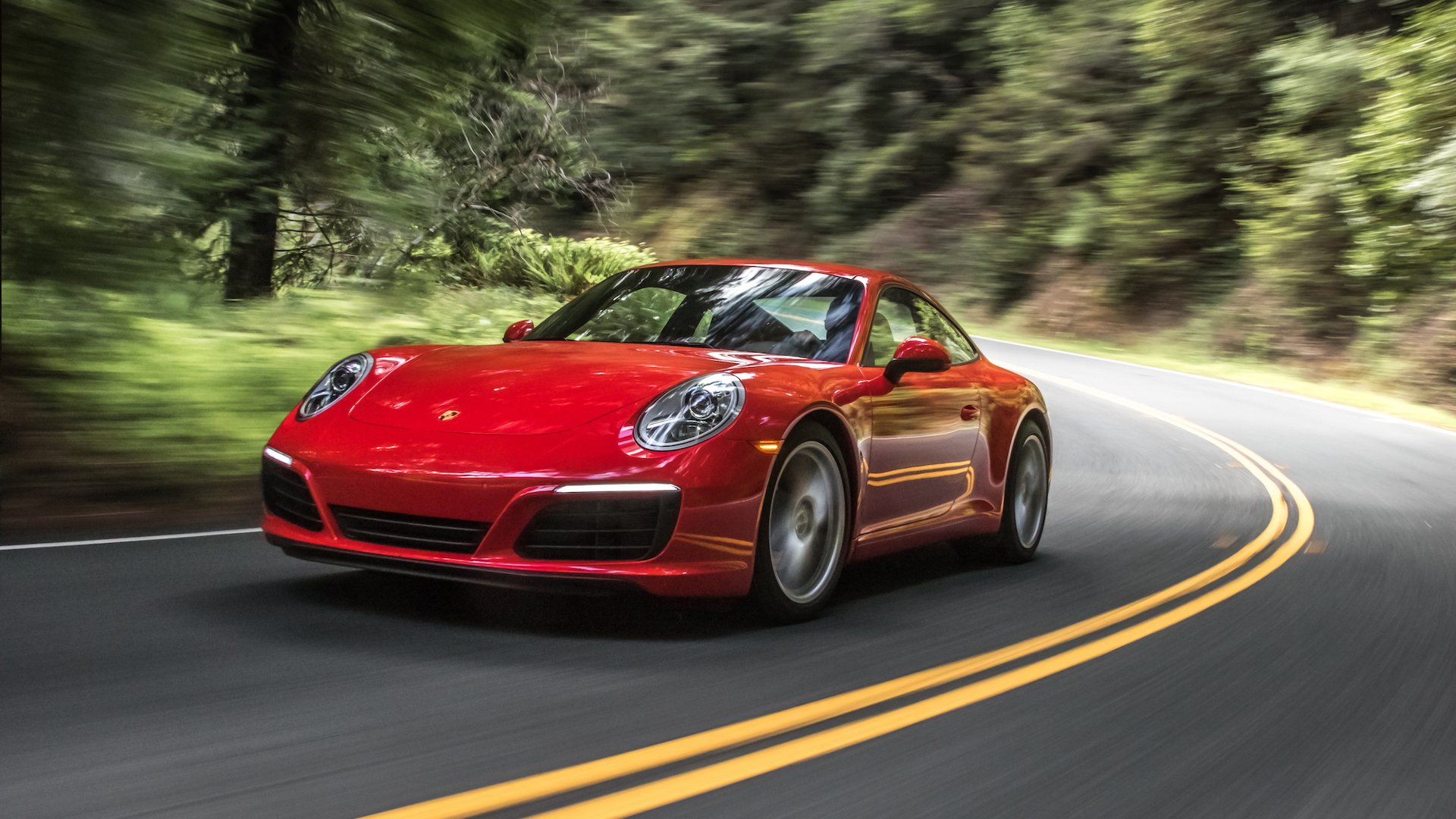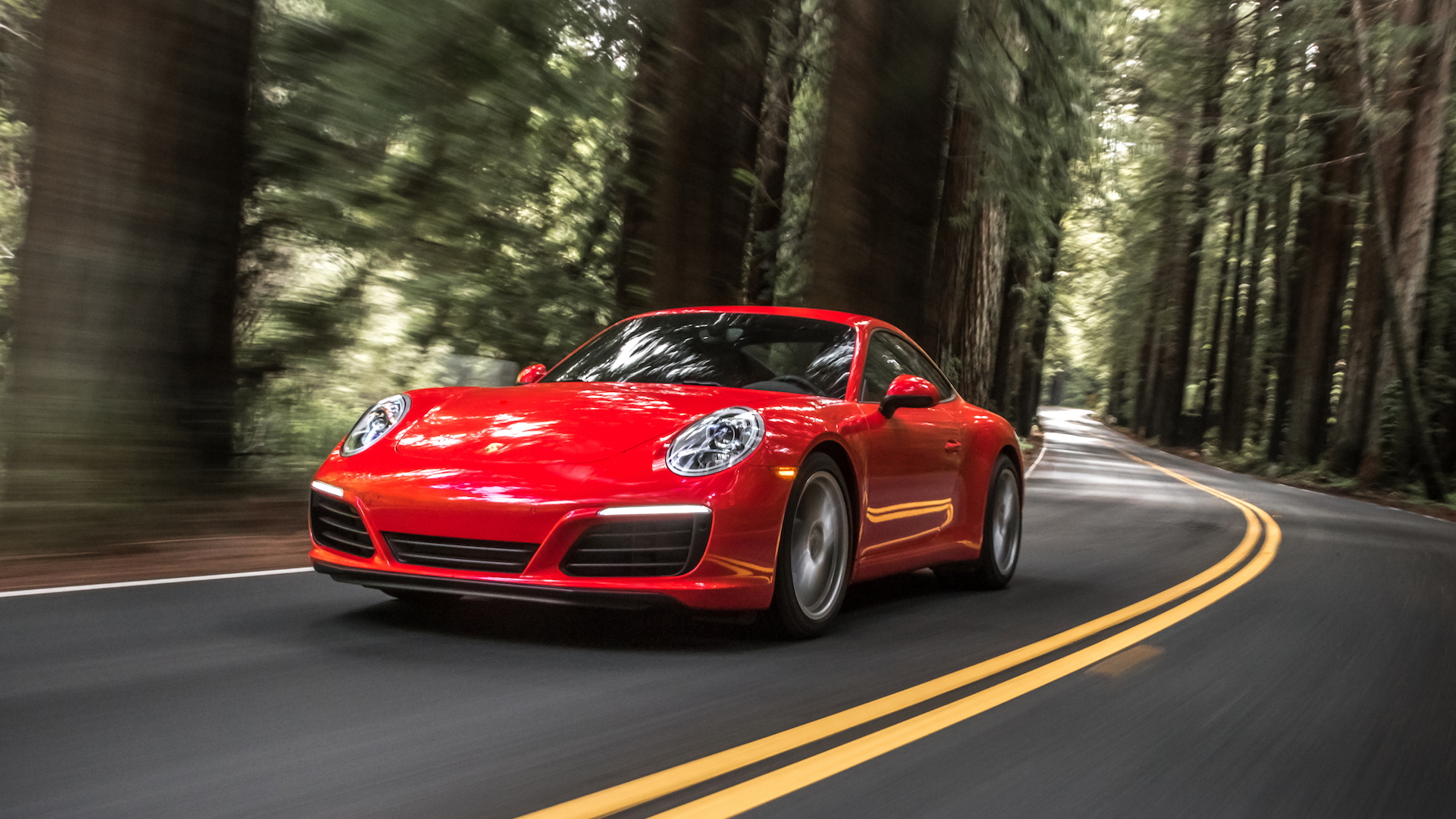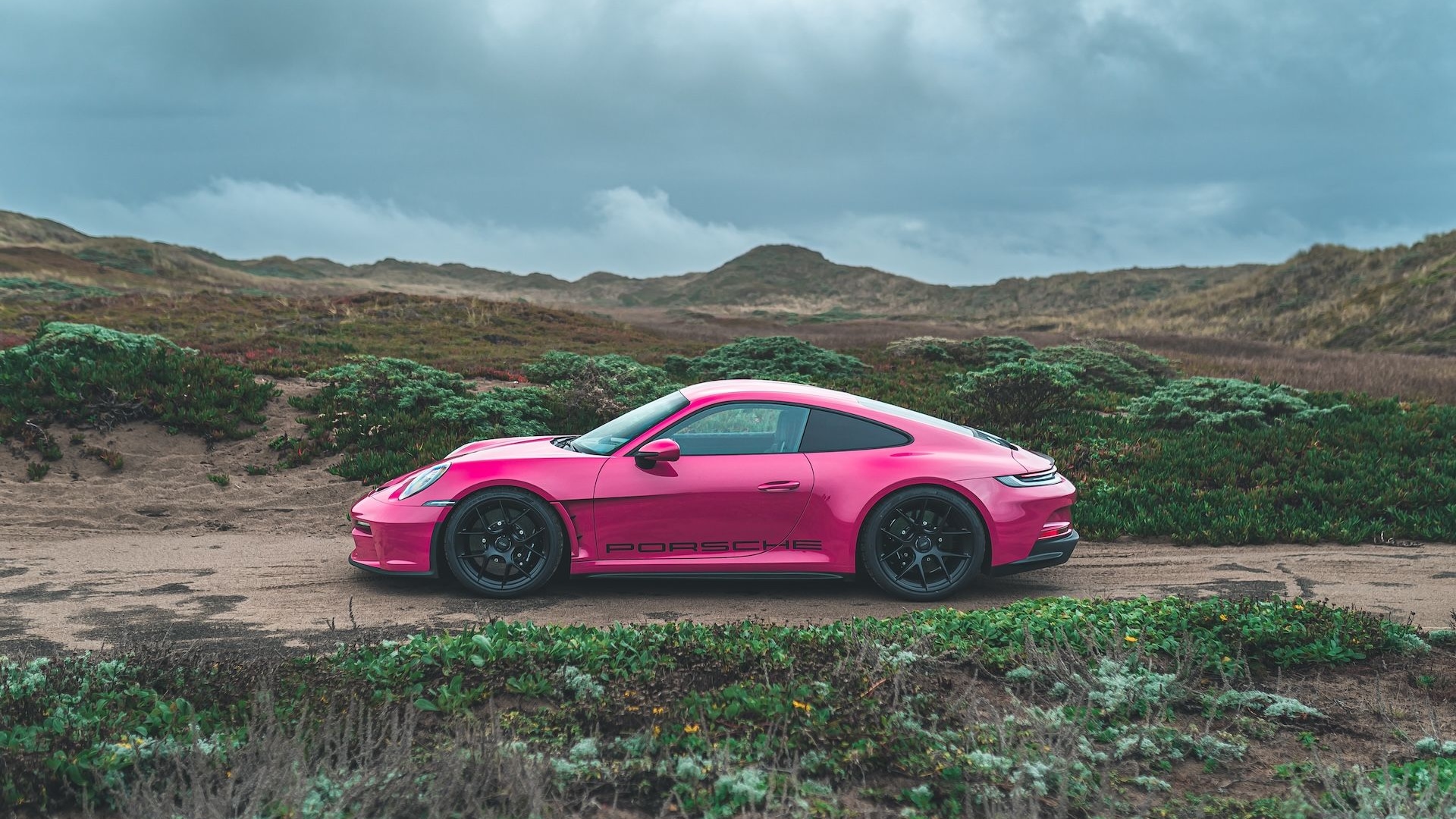The Porsche 911 isn’t just a car. It’s car history, one of the foundation garments on the body of work that includes everything from the Model T to the Beetle to the Corvette.
Catch us on the right day and we'd argue the 911 is one of the cars mankind will be measured by, if there's ever a real day of reckoning, and the reckoner turns out to be a car freak.
There's a reason it's an enduring piece of the landscape. The recipe hasn’t changed much in 50-odd years, and it hasn't had to. The flat-6 engine, the teardrop shape, they're timeless and distinctive pieces no other brand can replicate without looking like the basement at the Beijing auto show.
MORE: Read the latest Porsche news
That said, even icons have to bend with the times. Whether it's fuel economy or safety, or just the competition's full-court press into everyday supercar performance, even the 911 isn't immune to the rising tide of rivals. A Tesla Model S can best its acceleration; a Mustang GT puts down more power on paper.
The current 911's been with us just since 2012, but this year, it makes a huge leap of faith into the turbocharged world. With a fresh set of turbo-6 drivetrains, a slew of suspension changes, and a new interface, it's making bigger change than the progression from 991 to 991.2 indicates.
What you really need to know about that leap, is what happens from 1,700 to 5,000 rpm.

2017 Porsche 911 Carrera

2017 Porsche 911 Carrera

2017 Porsche 911 Carrera
A couple of decimals' worth
From the exterior, you can’t tell that there’s much new with the 911. It’s been sold in its current aluminum-intensive guise since the 2012 model year. As a 991.2, almost nothing changes from the outside, save for some revised lighting and grille vanes on the engine cover.
It’s out back where the 2017 model marks a big moment in 911 history. The base Carrera's made the switch to turbocharged power—so yes, there are turbos, then there are Turbo turbos.
With twin blowers on a new, downsized flat-6 engine, the 2017 Carrera and Carrera S now put out more power, and more low-end torque. Displacement drops from 3.4 liters to 3.0 liters, but the addition of twin turbochargers has given it a huge boost down low.
With the standard direct-injected 3.0-liter twin-turbo flat-6, the 911 Carrera makes 370 hp (up 20 from the last Carrera) and 331 lb-ft of torque, good for a 0-60 mph run in as little as 4.4 seconds and a top speed of up to 183 mph.
MUST SEE: Listen up: Dodge Viper ACR with straight pipes is as good as it gets
The Carrera S? It lays down 420 hp and 368 lb-ft for a 0-60 mph time of 3.7 seconds and a top speed of 191 mph. Add all-wheel drive and launches go a bit more smoothly, and the 0-60 mph times drop by another tenth of a second.
Where it all matters is that wedge of the power charts, where the Carrera turbo gulps in air, feeds it down its rear glass, spins its turbos and lights off the fuel-air explosion with a newly centered spark. Peak torque shows up at 1,700 rpm and stays on tap, on a massif central of twist while the flat-6 engine spools up to 5,000 rpm and beyond.
At 5,000 rpm it's been more power longer than the former Carrera S. And while turbocharged engines aren't typically as high-revving as naturally aspirated engines, the new flat-6 has a redline of 7,500 rpm. Plenty heady, that territory.
The trade-offs seem slight. The new Carreras carry around a little more weight, but it’s not enough to make a difference on tracks like the mighty Nurburgring, where Porsche’s clocked the new car at up to 10 seconds faster over a lap.
That low-end Catherine Wheel of torque gives it a huge advantage hitting the 'Ring’s long uphill climbs--or the stark elevation changes on the California coast somewhere between Mendocino and nowhere.

2017 Porsche 911 Carrera

2017 Porsche 911 Carrera

2017 Porsche 911 Carrera
Give a shift
That's just where the car nerdgasms start. The 911 is pretty much technical brain dump of the highest order, what with its variable-ratio steering, virtual transmission gears, and active anti-roll control.
You can still tap all that performance in the old-fashioned way, if you want. Like a real cork in an age of screw-cap wine, the 911 comes standard with a 7-speed manual transmission, now with a twin-disc clutch that can handle more torque. It’s slower to shift, sure, and yes, it gets lower gas mileage than the optional 7-speed dual-clutch gearbox, but really nothing can replace the sensation when you #GiveAShift, especially one so well-sorted, so deftly in control of so much power.
With three overdrive gears and long mid-range ratios, the manual Carrera gets a low-speed workout on a Highway 1 cruise. Gears 2, 3, and 4 get more action than they would in rush-hour traffic.
CHECK OUT: McLaren 650S crashes minutes after being delivered
We get it, though. Not everyone wants to saw away at a clutch pedal for an hour just to get on the 405. For us, the manual still reigns, but if we ever had to be saddled with an automatic in a car like a 911, the PDK is what we'd want. The best dual-clutch transmission in the business, the Porsche dual-clutch has rapid-fire responses, made sweeter this time with higher torque capacity and modified launch control programming so you can do those 4-second launches time, and time, and time again.
While it's all intended to improve low-end performance, fuel economy got a go-over, too. Stop/start now begins to cut off fuel if the car is approaching a stop, not just at stop. A pendulum inside either gearbox allows engineers to lug the engine lower at idle, for better economy. Active aero flaps conduct airflow more efficiently. As a result, on the EPA cycle, the base Carrera with PDK is a legit 30-mpg car.
Never enough
Because it's Porsche, and because nothing is ever good enough, everything is suspension has been touched. The fine line that once separated the 911 from the smaller, more lithe Cayman's all but obliterated, thanks to turbo-6s and turbo-4s and now, standard adaptive dampers on the 911. With it, Porsche lowers the ride height by 0.4 inches. Rear wheels are 0.5 inches wider than before, and there are new shocks for better handling response. Vertical ride motions and lateral lean are almost nonexistent, though the 911 feels more absorbent than that.
With the Sport Chrono package on S cars, there's a drive-mode selector (Normal, Sport, Sport Plus, and Individual), that affects the settings for a wide range of vehicle systems. It offers a PSM Sport function that allows more yaw but still intervenes when the car begins to rotate in a serious way. A hard stab at the brakes reactivates full intervention.
All-wheel drive can decouple or connect with the rear wheels through an electrohydraulic clutch; Carrera models now sit almost a half-inch (0.43 in, to be precise) lower than before, and Carrera S models can be fitted with a Sport suspension and aero kit that also lowers the car another near half-inch. (Yep, 0.43 in.)
Across the rears there's torque vectoring control induced by brake application, and a rear locking differential to further rein in power. On Carrera S models, there's a degree of active steering, where under 31 mph, the rears can toe in the opposite direction up to 2 degrees of the front for low-speed agility. From 31-50 mph, their direction depends on driving conditions; from 50 mph and up, all the wheels pivot in the same direction.
Finally, thicker brake rotors (4-piston on Carrera, 6-piston on the S) can be clamped down on after a crash to prevent more damage from a second collision. Carbon-ceramic brakes are an option, and Carrera cars ride on standard 19-inch tires, while Carrera 4s get stock 20-inch Pirelli P Zeros.
The borderline freakish levels of control drivers have over their 911 is summed up best at its come-hither rear. This is a car that has not one, not two, but three different exhaust systems. The top one, with dual round exhaust ports, uses a pressure-sensitive membrane to funnel noise right from the engine bay into the cockpit in three different ways.
Nonstop nerdgasm
Choice is a lovely thing, but a nearly option-free 911 is still an unvarnished pleasure. I drove the purest 911 on offer last week: a Guards Red Carrera coupe with the manual gearbox and only one or two add-ons.
Whether it's outfitted with adaptive everything, or kept pure and plain, the 911 rewards hard driving. The usual flat-6 metallic rasp still calls out the boxer cylinder arrangement. With the turbos, it's just coupled to the wolf whistle generated by its big air intakes.
Sailing through this slice of coastal California, there aren't many people around to appreciate the 911's sonorous soundtrack or its epic levels of grip. That's just fine. The same style of roads that would be jammed with tourists near Pebble Beach are serene, and almost empty here.
Elevation changes are the new 911's ally. Choose a lower gear, aim for the top of a rising curve, and the apex floods into the 911's windshield. The near-instant torque delivery is as close to a battery-electric's power curve as the 911 can get, at least until there's a substantial battery pack on board. The turbochargers stage power like a Soviet-era May Day parade, in an overwhelming show of of force.
Bank into oceanfront sweepers with million-dollar views and hundred-thousand-dollar tenants, and the 911's pedigree asserts itself. Heavy steering, delicate responses, sharp throttle--it's always on offense, always extracting more traction from tires and pavement.
It's tempting to compare the 911 to arrivistes like the NSX and R8. Quicker, even more mechanically complex in some cases, those cars have had to synthesize a brand image and a performance profile out of sometimes thin air. It's worked--but what's at the core?
With the 911, you never need to ask that question. You just need to key it to life--from the left side of the steering wheel, remember--and let the boxer behind your back lead you down the path of history.

2017 Porsche 911 Carrera
True to form
Tremendous performance aside, the 911 still does not suck whatsoever as a daily driver, either. The front seats are comfortable and form-fitting, no matter which 911 you choose.
Cabin layouts are nearly identical across the lineup, even though the 911's details vary widely. There are some minor trim-and-materials differences among variants, but with all, the cabin has an open feel, thanks to a large windshield and side windows.
The back seats are still kind of an outline of where real rear seats might be, if the 911 had any headroom back there. The front trunk holds enough stuff for a long weekend getaway--and that's one of its true secret missions. If you're up for its firm ride, the 911 makes for an epic weekend getaway car, emphasis on "getaway".
One of the great things about Porsche is how finely you can spec it out. Base car with a 7-speed manual and adaptive damping? It's a great $90,000 touring car. Add on S trim, the Sport Chrono package and rev-matching for the shifter, and all the dials are turned up a notch.
DON'T MISS: Hear the Bugatti Chiron’s monster engine rev
Go all in with the dual-clutch transmission and active rear steering, and it's a legit sports car with almost pinpoint precision when you're carving up mountain passes and needling through canyons. Or spec it out as a Cabriolet and you open up another conduit for those exhibitionist endorphins.

2017 Porsche 911 Carrera

2017 Porsche 911 Carrera

2017 Porsche 911 Carrera
Apple and Google find a new home
This year, the 911 addresses some major grievances with an all-new infotainment system. There’s a 7-inch touchscreen under glass, and it gets Google Earth and Street View maps, as well as Apple CarPlay.
Porsche lets drivers choose from two 918-inspired steering wheels. There's a larger one, and a smaller one--and with optional Sport Chrono packages, there's a switch that slides the 911 through the performance modes that remap everything from shock damping to stop/start to exhaust path. There's even a Sport Response function that throws all caution to the wind for 20 seconds; it's an all-access pass to your best (and probably worst) driving instincts.
Ordering a 911, really, can be a revealing Rorschach test that illuminates whatever self-control or taste issues you might be harboring. There's a practical side to its options list, along with those literally hundreds of leather and trim touches that can jack up the price: You can also jack up the 911’s front end by an inch and a half and avoid scuffing that beautiful nose, with a newly available hydraulic lift.
Bose and Burmester audio systems are big-ticket items, but the 911 now also offers blind-spot monitors, automatic emergency braking, and a lane-change system that helps monitor approaching traffic from behind.
The 2017 Porsche 911 lineup is priced from $90,395 for the Carrera, but there’s a major uptick as you plump it up with options. That's before you even get to 520-hp Turbo, 560-hp Turbo S, or 475-hp GT3 territory. In the Porsche world, these new turbo Carrera 911s are still the attainable ones.
Now, these attainable Porsches have a lot of the luster of their lustier brethren.
The bottom line with the updated 911 Carrera? Porsche may be turbocharging all the things, but it's done it without erasing any of the 911’s iconic shape or its soul. If anything, it's underscored them.
_______________________________________









